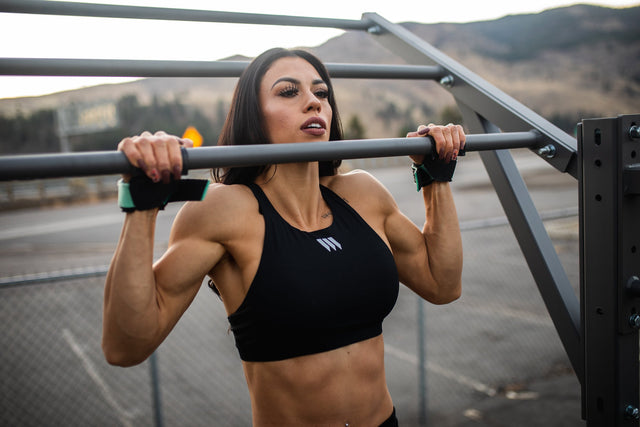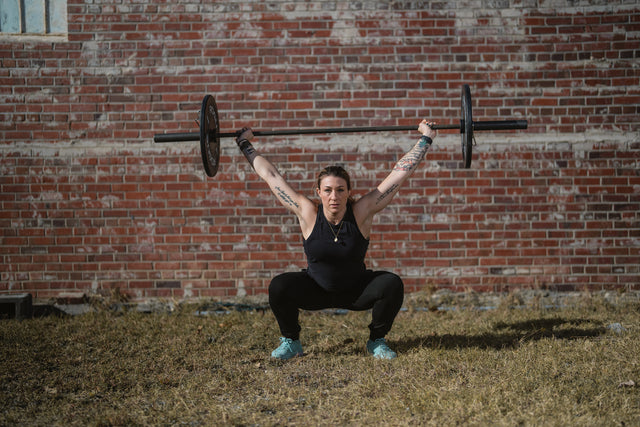Mastering Progressive Overload: The Key to Long-Term Gains
Consistently stacking gains in the gym requires more than just showing up. It requires intentional progression. Whether your goal is muscle growth, increased strength, improved endurance, or fat loss, you need a training program that evolves as your body adapts. This is where progressive overload and periodization come into play.
A well-structured program progressively challenges your neuromuscular system, promoting adaptation and recovery, while minimizing plateaus and overtraining.
What Is Progressive Overload and Periodization?
Although simple in theory, progressive overload is the application of increasing physical stress over time — typically via heavier loads, higher volume, or more frequency — to continually force the body to adapt.
The body only changes when it’s forced to. If the demands placed on your body stay the same, it will remain the same. To grow stronger and build muscle, you must consistently apply greater training stimuli.
Periodization refers to the strategic planning of a training program in phases (or cycles). These cycles manipulate training variables such as intensity, volume, and exercise selection to systematically drive performance improvements over time. While progressive overload is the principle, periodization is the blueprint.
“Periodized programs produce superior strength and performance adaptations compared to non-periodized training.”
— Williams et al., Sports Medicine
Principles of Progressive Overload
Progressive overload is based on manipulation of several acute training variables, including:
-
Training Volume (Sets × Reps)
-
Intensity (Load/Weight)
-
Frequency (Sessions per week)
-
Tempo (Time under tension)
-
Rest Intervals
-
Exercise Selection
If these variables remain constant week after week, plateau is inevitable. For your body to evolve, the load, intensity, or total volume must gradually increase.
“A progressive increase in volume, load, and frequency are all essential elements of continued neuromuscular adaptation.”
— Schoenfeld, Journal of Strength and Conditioning Research
Increasing Rep Count
Repetitions refer to how many times a given movement is completed in a set. Each repetition moves through three key phases:
-
Eccentric (lengthening under load)
-
Isometric (pause or hold)
-
Concentric (shortening or lifting)
Higher rep ranges increase time under tension (TUT), which promotes endurance and metabolic stress — a proven trigger for hypertrophy. Thus more reps = more time under tension (TUT) → a potent stimulus for muscular endurance and hypertrophy.
Rep Ranges by Goal:
-
Endurance: 12–20 reps @ 50–70% 1RM
-
Hypertrophy: 8–12 reps @ 70–85% 1RM
-
Strength: 3–6 reps @ 85–95% 1RM
Determining the Number of Sets
Sets represent groups of repetitions. When combined with reps, they determine your total training volume — a key driver of muscle hypertrophy and strength.
For example:
-
Hypertrophy: 3–5 sets of 8–12 reps
-
Strength: 4–6 sets of 3–6 reps
-
Endurance: 2–4 sets of 12–20 reps
“Training volume (sets x reps x load) is the most consistent predictor of hypertrophic response.”
— Krieger, Journal of Strength and Conditioning Research
Training Intensity
Intensity refers to how hard you're training relative to your maximum effort. It’s often expressed as a percentage of your 1-rep max (1RM).
-
For strength gains, intensity should be 80–95% of 1RM (low reps)
-
For hypertrophy, 65–85% of 1RM is ideal (moderate reps)
-
For endurance, 50–70% of 1RM (high reps)
Beginners should start with lower intensity to build foundational strength. As training experience increases, intensity must increase to avoid adaptation stagnation.
Training Frequency
Frequency is how often you train each muscle group per week. Research supports training each muscle at least twice per week for optimal results.
“Training a muscle group 2–3x per week elicits significantly greater hypertrophy than once per week.”
— Schoenfeld et al., Sports Medicine
Example training frequencies:
-
Full-body workout (3x/week) for beginners
-
Upper/lower split (4x/week) for intermediate lifters
-
Push-pull-legs (6x/week) for advanced athletes
Factors That Influence Your Ideal Training Split
Time Available:
How many days can you realistically train per week?
-
3 days: full-body or upper/lower split
-
4–5 days: push-pull or body part splits
-
6+ days: advanced bodybuilding splits or hybrid performance programs
Goals:
Are you training for endurance, muscle growth, or strength?
Weaknesses & Imbalances:
If you have specific muscular imbalances or mobility limitations, you may benefit from a hybrid training model, combining split training with functional movements and cardiovascular conditioning like HIIT or HIFT.
Increasing Resistance (Load)
The most obvious — yet often overlooked — form of progressive overload is simply adding more weight. If your current set feels easy by rep 12, it’s time to increase the load.
Tip: Use the "last-rep rule" — if your final reps feel too easy and you could keep going, it’s time to progress.
Remember:
Deload Weeks: The Secret to Longevity
Progress isn’t linear. Sometimes you need to step back to keep moving forward.
Deload weeks reduce volume and intensity to allow for recovery and supercompensation.
How to deload:
“Incorporating planned deload phases enhances strength and reduces overtraining risk.”
— Pritchard et al., Sports
How to Track Progressive Overload
Tracking your lifts ensures you’re making measurable progress.
What to record:
Tracking tools:
-
Apps: Trainerize, Strong, or MyFitnessPal
-
Spreadsheet log or notebook
-
Weekly progress reviews every 4–6 weeks
Tip: Use the “last set check” — if your final set feels easy, it’s time to increase either load or volume.
Common Mistakes to Avoid With Progressive Overload and Periodization
-
Increasing weight too quickly and sacrificing form
-
Not tracking sets/reps/load and guessing progression
-
Training the same way for months without periodization
-
Ignoring rest days or skipping deload phases
-
Overemphasizing machines instead of compound free-weight lifts
Don’t Forget Recovery and Nutrition
You can’t out-train poor recovery. Gains are made when you rest — not just when you lift.
Recovery Essentials:
-
Sleep: 7–9 hours per night
-
Hydration: Stay above 3L/day
-
Active recovery: Walking, mobility work, yoga
-
Supplements: Enhance recovery, reduce soreness, support adaptation
Recommended Supplements:
Exercise Selection: Choose What Supports Your Goals
Compound movements are the foundation of functional strength. They activate more muscle groups, burn more calories, and provide more room for progression.
Key compound lifts:
-
Squats
-
Deadlifts
-
Bench press
-
Overhead press
-
Pull-ups
-
Rows
Machines and isolation work have their place — but they should supplement, not replace, free-weight training.
“Compound multi-joint exercises stimulate greater strength and hypertrophy responses than single-joint isolation movements.”
— Paoli et al., Journal of Strength and Conditioning Research
Progressive Overload: Final Takeaway
The key to unlocking your next level in performance and aesthetics lies in progressive overload. Your body only adapts to what it’s challenged with — if you want change, you must apply change.
Whether you’re training for size, strength, or speed, focus on:
-
A structured periodization model
-
Adjusting reps, sets, and intensity over time
-
Increasing resistance and varying movement patterns
-
Being consistent and patient with your progression
Want help building a customized program based on progressive overload?
Check out personalized coaching at The Swole Kitchen and fuel your recovery with Swolverine Whey Isolate.
Need Help With Optimizing Your Nutrition And Training Plan To Finally Get The Results You've Been Waiting For?
The Swole Kitchen is an exclusive membership opportunity for those who are looking to pursue a performance-driven lifestyle. By combining wellness consulting, nutritional lifestyle improvement, and 1:1 customized nutrition plans to our members, our programs aim to optimize human potential. In each of our programs, you’ll receive guidance to reclaim your health, fuel your lifestyle, and pursue performance ambitions, all while learning how to make nutritional decisions from a place of self-trust and intuition. All of our coaches are committed to providing the highest level of results-driven wellness to our members.

SWOLVERINE IS AN ENDURANCE ATHLETE AND ACTIVE LIFESTYLE BRAND. MADE FOR THE ELITE ATHLETE, AND THE STRONG-WILLED OUR PRODUCTS WERE DESIGNED TO FUEL YOUR ATHLETIC PERFORMANCE. WE PERFORM WHEN YOU PERFORM.
We believe that everyone can optimize not only their athletic performance but their human potential. The way we believe we can optimize performance is through transparency, clinically effective doses, and clinically proven ingredients with evidence-based outcomes. We provide the nutrients you need to power your active lifestyle.








